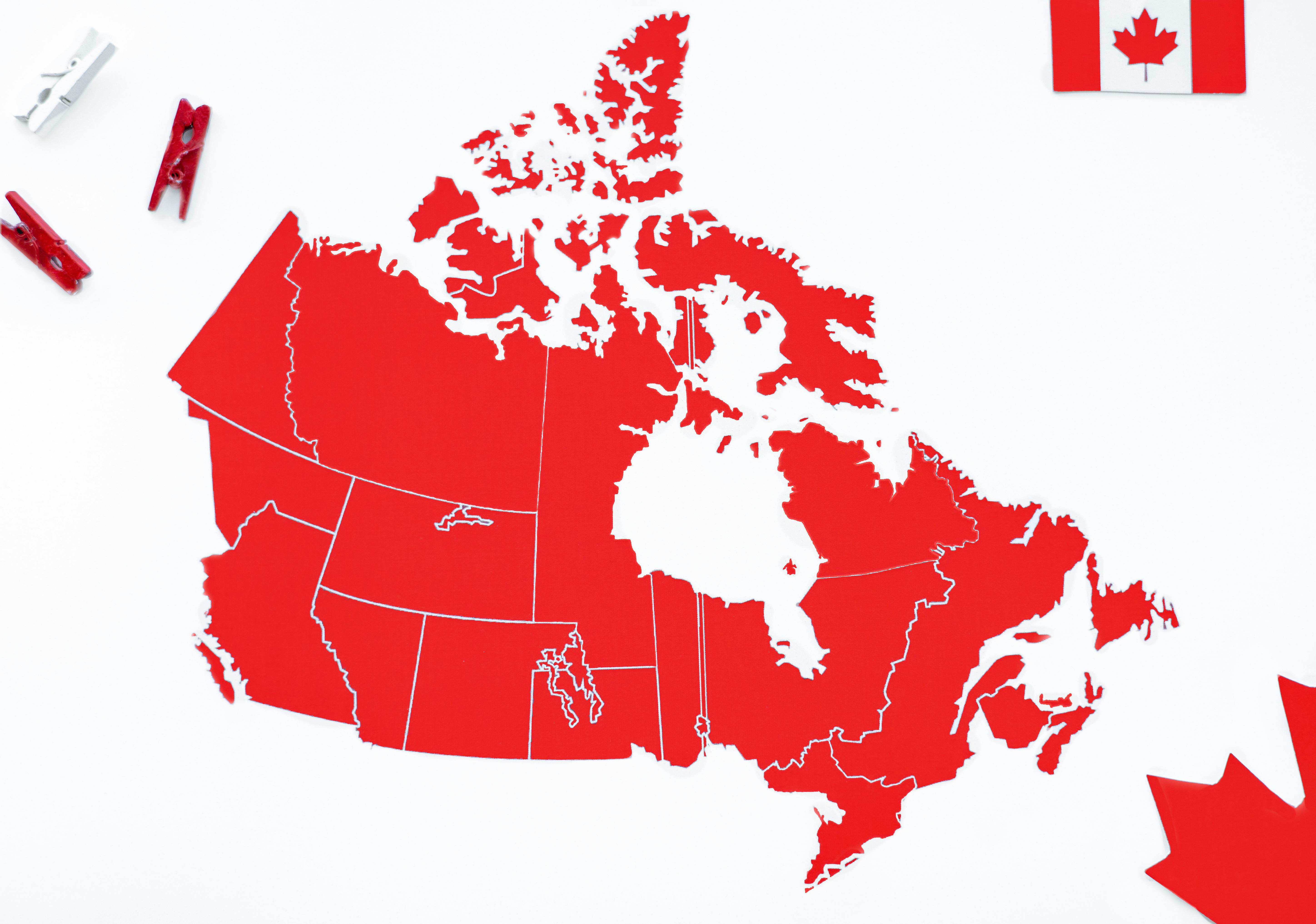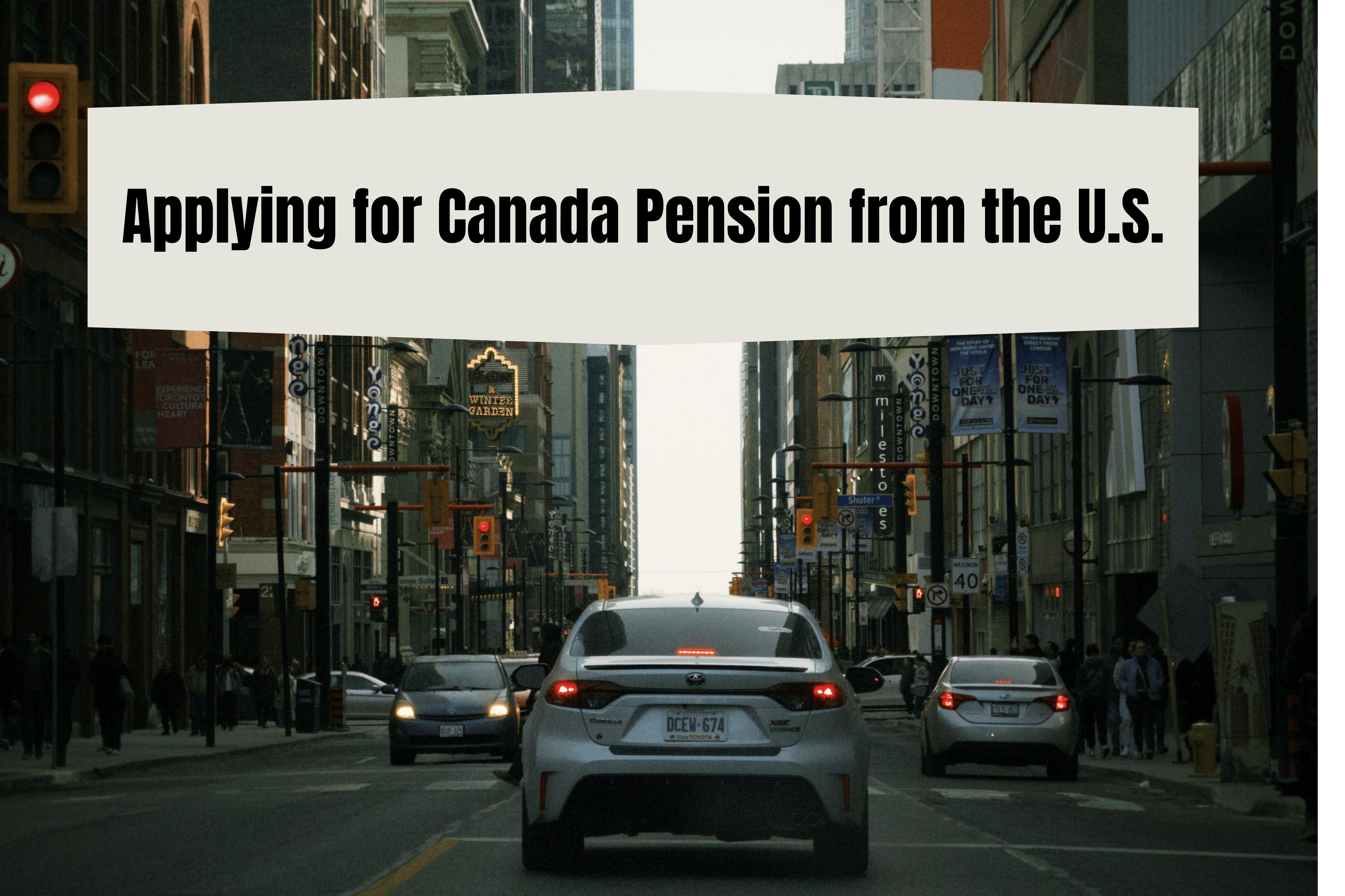Tax-Free Savings Account (TFSA): The Ultimate Guide for Individuals

Table of Contents
- How to Open a TFSA: Step-by-Step Guide
- TFSA Contribution Limits
- TFSA Over-Contribution: What Happens If You Exceed the Limit?
- Withdrawing from Your TFSA: Rules and Best Practices
- TFSA for Retirement Savings: A Smart Alternative to RRSPs
- TFSA for Short-Term Goals: Emergency Fund, Education, and More
- TFSA for Non-Residents
- Common TFSA Mistakes to Avoid
Disclaimer: This article is for informational purposes only and does not constitute legal, financial, or tax advice. Pension laws, tax regulations, and eligibility requirements may change over time. Consult with a qualified tax professional, financial advisor, or government agency for personalized guidance regarding your specific situation.
What is a TFSA?
A Tax-Free Savings Account (TFSA) is a registered account that allows Canadians to save and invest money without paying taxes on earnings. Unlike other savings accounts, any interest, dividends, or capital gains earned within a TFSA are completely tax-free—even when you withdraw them.
📌 Example: If you invest $10,000 in a TFSA and it grows to $15,000 over time, you can withdraw the full $15,000 without paying any taxes.
Why Was the TFSA Introduced?
The Canadian government launched the TFSA in 2009 to help individuals save for different financial goals, whether for retirement, buying a home, emergencies, or travel.
Who Should Use a TFSA?
A TFSA is great for:
✔️ Young professionals looking to grow their savings tax-free.
✔️ Retirees wanting to invest without affecting government benefits.
✔️ Students who want a flexible savings account.
✔️ Anyone looking for a tax-efficient way to save or invest.
How Does a TFSA Differ from Other Savings Accounts?
| Feature | TFSA | RRSP | Regular Savings Account |
|---|---|---|---|
| Tax-Free Growth | ✅ Yes | ❌ No | ❌ No |
| Tax-Free Withdrawals | ✅ Yes | ❌ No | ✅ Yes |
| Affects Government Benefits? | ❌ No | ✅ Yes | ❌ No |
| Withdrawal Restrictions? | ❌ No | ✅ Yes (until retirement) | ❌ No |
📌 Example: If you contribute to an RRSP, withdrawals are taxed. In contrast, TFSA withdrawals are completely tax-free.
Source: Canada Revenue Agency
Who Qualifies for a TFSA?
To open a TFSA, you must:
✅ Be a Canadian resident.
✅ Be 18 years or older (or 19 in some provinces like British Columbia).
✅ Have a valid Social Insurance Number (SIN).
Example: If you turn 18 in 2024 and have a valid SIN, you immediately start accumulating contribution room—even if you don’t open a TFSA right away.
Minimum Age Requirement for Opening a TFSA
Most provinces: 18 years old.
British Columbia, Newfoundland, and a few others: 19 years old (due to higher age requirements for signing contracts).
Even if you live in a province where the legal age is 19, your TFSA contribution room starts accumulating at 18.
Can Non-Residents Open a TFSA?
Non-residents can keep an existing TFSA, but cannot contribute while living outside Canada. If they do, there’s a 1% monthly penalty on contributions made as a non-resident.
Example: If you move to the U.S. but still have a TFSA, you can leave your money in it, but you cannot add new funds without paying penalties.
Source: Canada Revenue Agency
How to Open a TFSA: Step-by-Step Guide
Opening a TFSA is easy! Follow these 5 simple steps:
Step 1: Choose a TFSA Provider
You can open a TFSA at:
Banks & Credit Unions (TD, RBC, Scotiabank, CIBC, etc.)
Online Brokerages (Questrade, Wealthsimple, etc.)
Financial Advisors (Private wealth managers)
Tip: If you plan to invest (stocks, ETFs, bonds), choose a TFSA from an online brokerage instead of a regular bank savings account.
Step 2: Gather Required Documents
You’ll need:
Government-issued ID (driver’s license or passport)
Social Insurance Number (SIN)
Proof of residency (utility bill, bank statement)
Step 3: Decide on Your TFSA Type
Savings TFSA → Earns low interest but is safe.
Investment TFSA → Can hold stocks, ETFs, mutual funds for higher growth.
GIC TFSA → Offers fixed interest rates with no risk.
Example: If you want a safe TFSA for emergencies, choose a High-Interest TFSA Savings Account. If you want to grow wealth long-term, invest in a TFSA with stocks or ETFs.
Step 4: Set Up and Fund Your TFSA
Decide how much you want to contribute (within your TFSA limit).
Transfer funds from your bank account.
Set up automatic contributions for regular savings.
Example: If your TFSA limit is $40,000, you can deposit up to $40,000 tax-free.
Step 5: Start Investing (Optional)
If using a self-directed TFSA, you can invest in:
Stocks (Apple, Shopify, Tesla)
ETFs (S&P 500 Index)
Bonds & GICs (Government and corporate bonds)
Tip: If you’re new to investing, start with a low-risk TFSA option like ETFs or GICs.
TFSA Contribution Limits
The contribution limit for a Tax-Free Savings Account (TFSA) determines how much money you can deposit into your account each year without facing penalties.
These limits are set by the Canada Revenue Agency (CRA) and can change annually based on inflation.
How Much Can You Contribute?
Annual Contribution Limit: For 2023, the limit is $6,500. This amount may change each year.
Total Contribution Room: If you haven’t used your full contribution limit in previous years, the unused room carries forward to future years. For example, if you contributed $3,000 in 2020, you would have $3,500 left to contribute in 2021 ($6,000 limit in 2021).
Lifetime Contribution Limit: Since 2009, the cumulative total contribution room for anyone who was 18 or older in 2009 has grown. As of 2023, the total contribution room is $88,000 for someone who has been contributing since the start.
Example: If you were 18 in 2009 and haven’t contributed yet, your total limit by 2023 would be $88,000.
What Happens If You Exceed the Contribution Limit?
If you contribute more than the limit, you’ll be hit with a penalty of 1% per month on the excess amount. This can add up quickly, so it’s important to keep track of your contributions.
TFSA Over-Contribution: What Happens If You Exceed the Limit?
Sometimes, people accidentally exceed their TFSA contribution limit, and that can lead to penalties. Here's what you need to know about over-contributions and how to avoid them:
What Happens When You Over-Contribute?
If you contribute more than your available room, you will be charged a penalty of 1% per month on the excess amount. For example:
If you exceed your limit by $1,000, you’ll pay $10 per month in penalties (1% of $1,000).
This penalty is charged every month until you correct the excess contribution.
How to Avoid Over-Contributing
Track your contributions: Keep a personal record or use online banking tools to monitor contributions.
CRA My Account: The CRA provides an online portal where you can check your current TFSA contribution room. This is a helpful tool to avoid mistakes.
What to Do if You Over-Contribute
Withdraw the excess: If you’ve over-contributed, withdrawing the excess amount will stop the penalties from increasing. Just make sure to do this before the end of the month.
Contact CRA: If the over-contribution was a mistake, you can call the CRA and explain. In some cases, they might reduce or waive the penalty.
Example:
Suppose you’ve contributed $10,000 in a year when your limit was $6,000. The $4,000 overage would incur a penalty of $40 for that month. If you don’t withdraw the excess by the end of the month, the penalty keeps stacking up.
Withdrawing from Your TFSA: Rules and Best Practices
One of the major advantages of a Tax-Free Savings Account (TFSA) is the ability to withdraw money tax-free at any time without penalties. However, there are some key rules and best practices to keep in mind to ensure you’re using your TFSA to its full potential.
Can You Withdraw from a TFSA at Any Time?
Yes, you can withdraw funds from your TFSA at any time and for any reason, such as for an emergency, a big purchase, or even a vacation. The best part is that these withdrawals are tax-free. You don’t have to pay taxes on the money you take out, regardless of whether it’s earned interest, dividends, or capital gains.
Example:
Let’s say you have $10,000 in your TFSA, and you decide to withdraw $5,000 to cover an unexpected expense. The amount you withdraw will not be taxed.
How Does Withdrawing Funds Affect Your Contribution Room?
Here’s where it gets a little tricky. While you can withdraw money at any time, the withdrawal does not permanently free up contribution room in the same year. You cannot re-contribute that withdrawn amount in the same calendar year without facing penalties for exceeding the contribution limit. However, the withdrawn amount is added back to your contribution room in the following year.
Example:
You withdraw $5,000 from your TFSA in 2023.
Your contribution room increases by that $5,000 in 2024, allowing you to contribute that amount again next year.
TFSA for Retirement Savings: A Smart Alternative to RRSPs
Many people use Registered Retirement Savings Plans (RRSPs) for retirement savings, but a TFSA is another great tool to consider. While an RRSP provides tax deductions on contributions, a TFSA offers tax-free withdrawals in retirement. Both accounts serve different purposes, and the best choice depends on your personal financial situation.
Can a TFSA Replace an RRSP for Retirement?
A TFSA can be a useful tool for retirement savings, but it is not necessarily a replacement for an RRSP. While RRSPs allow you to save on taxes now (since contributions are tax-deductible), TFSAs offer tax-free growth and tax-free withdrawals in retirement. The TFSA could be especially beneficial if you expect your retirement income to be higher than your current income.
How to Use a TFSA for Retirement Savings
If you want to use a TFSA for retirement, you can take advantage of tax-free growth by holding long-term investments like stocks, bonds, or ETFs inside your TFSA. This way, all the interest, dividends, and capital gains you earn inside the TFSA will grow without being taxed.
Example:
Suppose you’re 30 years old and start contributing $5,000 annually to your TFSA, invested in stocks. By the time you reach 60, you could have a significant tax-free nest egg built up.
The growth and earnings from your TFSA will never be taxed when you take it out at retirement.
When to Use TFSA vs. RRSP for Retirement
Use a TFSA if:
You expect your income in retirement to be similar to or higher than your current income.
You want flexibility in withdrawals (no mandatory RRSP withdrawal rules at age 71).
Use an RRSP if:
You are in a higher tax bracket now than you expect to be in retirement.
You want immediate tax deductions to lower your taxable income.
Example:
If you are earning $100,000 now and expect to make $50,000 in retirement, contributing to an RRSP will allow you to save on taxes now while reducing your taxable income.
TFSA for Short-Term Goals: Emergency Fund, Education, and More
While TFSAs are great for long-term growth, they’re also perfect for short-term financial goals. With the ability to withdraw funds tax-free at any time, a TFSA can be a smart choice for things like an emergency fund, saving for education, or buying a big-ticket item.
Should You Use a TFSA as an Emergency Fund?
A TFSA can be ideal for your emergency fund because:
You can access your money quickly and without penalties.
The interest or gains you earn are tax-free.
Example:
Let’s say you set aside $5,000 in your TFSA for emergencies. If something unexpected happens (like car repairs), you can withdraw that $5,000 without any tax and use it for the repair costs.
TFSA vs. RESP for Education Savings
A Registered Education Savings Plan (RESP) is specifically for saving for children’s education, but a TFSA can also be used for educational expenses. While an RESP offers government grants for education savings, a TFSA allows more flexibility because you don’t have to use the money for education if you don’t want to.
Example:
Suppose you’re saving for your child’s education, but you’re uncertain about future plans. A TFSA will allow you to use the funds for education if needed or for other purposes, without being restricted like an RESP.
How to Use a TFSA for Travel, Buying a Car, or a Home Purchase
Because TFSA withdrawals are tax-free, you can use it for various short-term goals like:
Saving for travel or vacations.
Purchasing a new car.
Saving for a down payment on a home.
Just remember, the contribution limit still applies. So if you withdraw $5,000 for a trip, you can only contribute $5,000 more in the following year.
Example:
If you are saving for a home, you can use your TFSA for a portion of the down payment. However, you might also want to explore the First-Time Home Buyer’s Plan (HBP) in addition to your TFSA, which has its own benefits.
TFSA for Non-Residents
Can non-residents contribute to a TFSA?
If you are no longer a Canadian resident, you cannot contribute to your TFSA. Once you leave Canada and become a non-resident, your ability to contribute is officially blocked.
Example: If you move to the United States, you are considered a non-resident of Canada. While you can still keep your existing TFSA and benefit from tax-free growth, you cannot add any more money to the account.
What happens to your TFSA if you leave Canada?
You can keep your TFSA after leaving Canada. The investments inside the TFSA will continue to grow tax-free in Canada. However, your non-resident status will affect the contribution limit. You won’t be able to contribute any more funds, but the growth within the account remains untaxed.
Example: If you have $50,000 in your TFSA when you leave Canada, you can still see your TFSA grow tax-free. But any future contributions will not be allowed.
How are non-residents taxed on TFSA earnings?
For non-residents, while TFSA earnings remain tax-free in Canada, the country where you now reside may tax the earnings. For example, the U.S. taxes income earned in Canadian TFSAs (like interest, dividends, and capital gains). It’s important to check with a local tax expert in your new country of residence for specific tax rules.
Example: A Canadian expat living in the U.S. with a TFSA will still enjoy tax-free growth in Canada, but any dividends or interest may be taxable in the U.S.
How to Check Your TFSA Balance and Contribution Room
It’s essential to know your available contribution room because exceeding it could result in penalties. The Canada Revenue Agency (CRA) tracks your contribution room for you, but you should keep an eye on it to avoid mistakes.
Example: If you accidentally contribute $6,000 when your limit is only $5,000, you’ll be subject to a 1% penalty on the excess amount per month until you correct it.
How to check your TFSA balance and contribution room
You can easily check your TFSA contribution room using the CRA My Account online portal. This service allows you to view the amount of room you have left for contributions in the current year and any unused room from previous years.
Steps to check your TFSA balance:
Log in to your CRA My Account.
Go to the “Tax-Free Savings Account” section.
Review your available contribution room and transaction history.
Example: If you’ve contributed $3,000 this year and have $2,000 of unused room from last year, your available contribution room for the current year will be $4,000.
Why is this important?
By knowing your available contribution room, you can avoid over-contributing and getting hit with the penalty fees.
TFSA vs. RRSP vs. FHSA
When it comes to saving for the future, there are several tax-advantaged accounts in Canada, including the TFSA, RRSP, and the new FHSA (First Home Savings Account).
It’s important to understand the differences between these accounts to make the best choice based on your savings goals.
1. TFSA (Tax-Free Savings Account)
Tax Benefits: Contributions are not tax-deductible, but all withdrawals (including earnings) are tax-free.
Best for: Long-term savings, emergency funds, and those seeking flexible access to their funds.
Contribution Limit: Up to $6,500 for 2023 (check annually for limits).
Withdrawal Flexibility: You can withdraw money at any time without tax consequences, and the amount withdrawn can be re-contributed in future years.
Example: Use the TFSA to save for retirement, a car purchase, or an emergency fund. All investment growth inside the TFSA is tax-free.
2. RRSP (Registered Retirement Savings Plan)
Tax Benefits: Contributions are tax-deductible, meaning you get a tax break now. However, withdrawals are taxed as income when you take them out, typically in retirement.
Best for: Retirement savings when you want to reduce taxable income now.
Contribution Limit: 18% of your earned income from the previous year, up to a maximum of $30,780 for 2023.
Withdrawal Rules: Withdrawals are taxed, and if you withdraw early (before retirement), you’ll pay tax on that amount.
Example: If you’re in a higher income bracket, contributing to an RRSP reduces your taxable income in the year you contribute, and you pay tax when you withdraw it (presumably at a lower tax rate in retirement).
3. FHSA (First Home Savings Account)
Tax Benefits: Contributions to an FHSA are tax-deductible, and withdrawals for the purpose of buying your first home are tax-free (including any investment growth).
Best for: First-time homebuyers saving for a down payment.
Contribution Limit: $8,000 annually, up to a lifetime maximum of $40,000.
Withdrawal Rules: Withdrawals for purchasing a first home are tax-free. If you don’t use the funds for this purpose, you will be taxed.
Example: If you’re buying your first home, you can use the FHSA to save for your down payment, get tax deductions on contributions, and withdraw it tax-free to buy your house.
Which Account Is Right for You?
TFSA: Best for flexible savings, emergency funds, and long-term goals.
RRSP: Ideal for retirement savings and those looking to reduce taxable income now.
FHSA: Perfect for first-time homebuyers who want to save for a down payment while benefiting from tax-free growth.
Common TFSA Mistakes to Avoid
A Tax-Free Savings Account (TFSA) can be a powerful tool for growing your savings, but it's easy to make mistakes. Knowing these common pitfalls can help you avoid unnecessary penalties and maximize your savings.
Let’s dive into the most common mistakes people make with TFSAs, and how to avoid them.
1. Over-Contributing to Your TFSA
One of the most common mistakes is exceeding your annual contribution limit. If you contribute more than you're allowed, you’ll face a penalty of 1% per month on the excess amount.
Example:
Let’s say the contribution limit for the year is $6,000. If you mistakenly contribute $7,000, you’ve over-contributed by $1,000. This would result in a penalty of $10 per month for every month that the over-contribution stays in the account.
So, if you don’t correct the mistake in the first month, you’ll pay $10 in penalties that month, and an additional $10 the following month, and so on.
How to Avoid This Mistake:
Always keep track of your contributions and check your available contribution room on the CRA My Account.
2. Withdrawing and Re-Contributing in the Same Year
Another mistake is withdrawing funds from your TFSA and re-contributing the same amount in the same calendar year.
While you can withdraw money at any time from your TFSA, the amount you withdraw doesn’t count as contribution room until the following year.
Example:
If you contribute $6,000, then withdraw $3,000 and try to re-contribute the $3,000 in the same year, you would be exceeding your contribution room. The re-contribution counts as an additional $3,000, even though you had withdrawn it earlier.
How to Avoid This Mistake:
Wait until the next calendar year before re-contributing withdrawn funds, unless you have unused contribution room from previous years.
3. Holding U.S. Stocks in Your TFSA (Tax Implications)
Holding U.S. stocks in your TFSA may seem like a good idea, but interest and dividends earned from U.S. stocks in a TFSA are subject to a withholding tax of 15%.
Since TFSA accounts are tax-free in Canada, you don’t get a tax credit for foreign taxes paid on U.S. dividends, unlike in an RRSP.
Example:
If you earn $100 in dividends from U.S. stocks in your TFSA, you’ll lose $15 to U.S. withholding tax, and the remaining $85 will be tax-free in your TFSA. However, in an RRSP, you wouldn’t face the 15% withholding tax.
How to Avoid This Mistake:
Consider holding Canadian dividend-paying stocks in your TFSA to avoid foreign tax implications.
If you prefer U.S. stocks, you might want to hold them in an RRSP to avoid the withholding tax.
4. Not Using the TFSA for Investments
A TFSA allows you to invest in a variety of financial products like stocks, bonds, ETFs, and mutual funds, but some people only use their TFSA for a high-interest savings account.
While it’s safer, you’re missing out on higher growth potential offered by investments like stocks or ETFs, especially over the long term.
Example:
If you only keep $6,000 in a high-interest savings account earning 1%, you’re not maximizing the full potential of your TFSA.
On the other hand, if you invest that same $6,000 in a diversified stock portfolio and earn an average return of 6% annually, your savings can grow significantly over time.
How to Avoid This Mistake:
Use your TFSA for long-term investments that match your financial goals, such as equities or ETFs.
5. Not Naming a Beneficiary for Your TFSA
If you don’t name a beneficiary for your TFSA, the account’s value will be included in your estate, which can lead to delays and potential tax liabilities. Naming a beneficiary ensures a smooth transfer of funds without involving probate.
Example:
If you pass away without naming a beneficiary, your TFSA will be subject to probate fees and may incur delays in transferring funds to your heirs.
How to Avoid This Mistake:
Ensure you name a beneficiary when you open your TFSA.
Also read ; Best Employer Pension Plans in Ontario



